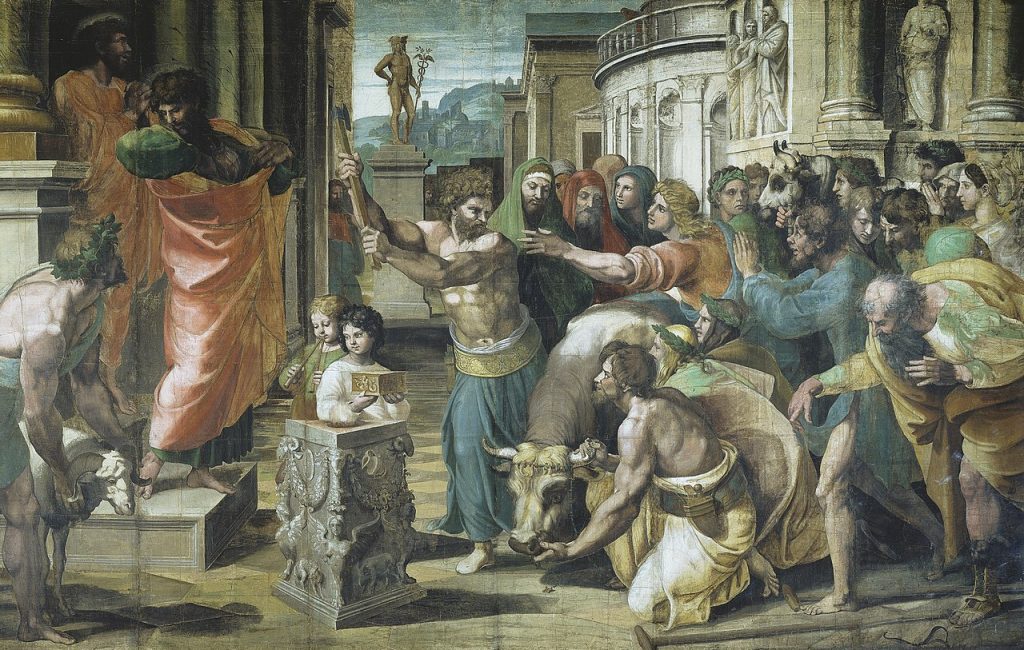To God be the glory
A way to end the school year

We’ve entered that season of celebration and recognition: year-end recitals, final concerts, research presentations, and departmental dinners. Commencement is just around the corner. Seniors and their photographers have been in and out of the Chapel for those iconic Valpo graduation pictures in front of the fantastic Munderloh windows. This is all good and necessary. There are lots of accomplishments within our community worthy of celebration. Taking the time to recognize and celebrate diligent work and the commendable results that it brings is good, not only for those being lauded but for the university itself. We are and want to continue to be a place of significant accomplishment, not only by students but by faculty and staff as well. Achievement is at the forefront of a university mission.
But achievements and the recognition that they inspire only go so far. If we are driven simply by the quest for achievement in itself and the honor and praise it generates, we’ll be drawn into an endless quest for the next moment of glory – the thrill of celebration fades, even if our celebratory social media posts persist in the cloud. Work well done is usually followed by more work. That’s how it goes for people of achievement. There has to be a better reason for achievement. Thankfully, there is. Our good achievements, born out of our commitment to diligent work, are among the means by which God is blessing creation with abundance. They are our participation in God’s continuous work of creation. As such, they are occasions for praise and thanksgiving.
In what might be one of the weirdest stories in the book of Acts, Paul and his missionary companion, Barnabas, visit the city of Lystra. Lystra was a Roman colony in present-day Turkey. Typically in a new location, Paul, a learned Jewish man, would present himself as an itinerant preacher to the local synagogue and seek an audience for the Gospel within that community where he and they had the Hebrew Bible in common. There seems not to have been a synagogue in Lystra. Instead, the account indicates that Paul was speaking to a crowd of people in a public area outdoors and that among those listening to him was a man who had been unable to walk since birth. What happens next stuns the crowd. The text reads, “Paul, looking at him intently and seeing that he had faith to be healed, said in a loud voice, ‘Stand upright on your feet.’ And the man sprang up and began to walk.” The conclusion of the Lystran crowd? The gods have come to visit! The priest from the local temple of Zeus appears with oxen and garlands – everything necessary to offer a sacrifice of thanksgiving to the gods.
Now, prior to this, in other locations, Paul and Barnabas had suffered some rough treatment. On the stops immediately preceding their visit to Lystra, Paul and Barnabas had been driven from town under threat of stoning! One might imagine that the praise they were receiving in Lystra would have been a welcome change. Finally, they’re getting the reception that they deserve!
But Paul and Barnabas are not pleased; they’re not even relieved. Instead, having torn their clothes in a culturally appropriate ritual sign of their distress, they rush into the crowd to stop the celebration. “We’re mortal humans, just like you!” they cry. And then they attempt to turn the crowd’s attention to consider the limitless generosity of God as marked by the abundance of creation. They steer the praise directed to them toward expressions of gratitude to the true God for all that God provides in the created order: “…rains from heaven and fruitful seasons and filling you with food and your hearts with joy.”
When someone is baptized at the Chapel, as the ceremony is coming to its conclusion, a burning candle is handed to the newly baptized. This gift is accompanied by the commendation, “Let your light so shine before others that they may see your good works and glorify your Father in heaven.”
“In thy light, we see light” This is what it means to be Beacons.
As we wrap up this semester, Pr. Kate and I bid you peace, congratulate everyone on work well done, and invite you to join us in saying “To God be the glory!”
Pr. Jim
April 26, 2023
Art: “The Sacrifice at Lystra” from the Raphael Cartoons, a series of seven full-sized plans for tapestries commissioned for the Sistine Chapel from the painter Raffaello Sanzio da Urbino, (Raphael), 1514-1515.
Rev. James A. Wetzstein takes turns writing weekly devotions with Rev. Katherine Museus at Valparaiso University, where both serve as university pastors.